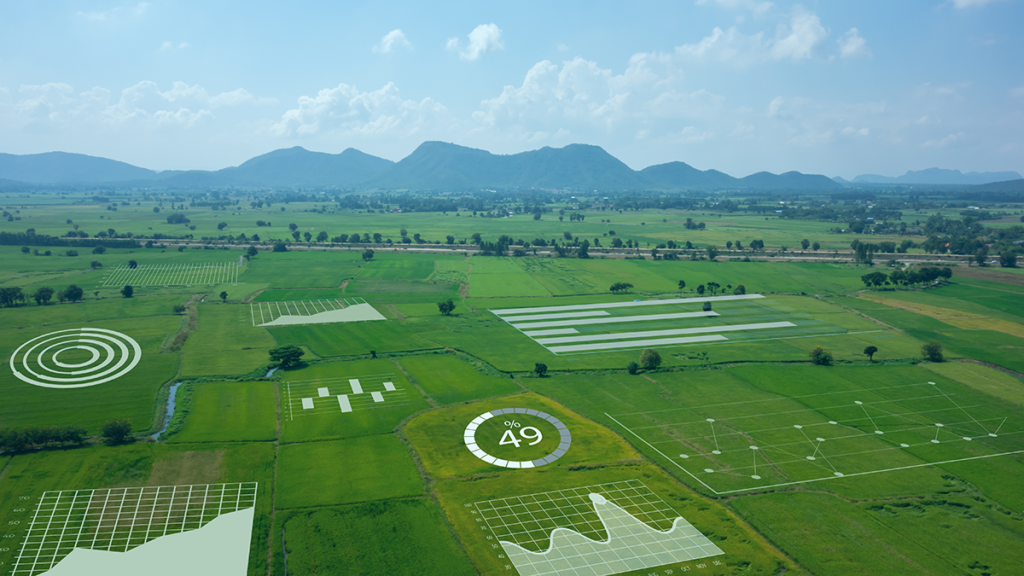The IoT systems in smart farming have been depicted in six main sections by EET India, which are processors, sensors, signal conditioning, power management, connectivity, and positioning.
Common use cases like automatic fertilisation, automatic irrigation, crop management, precision farming, and livestock monitoring all can be realised through IoT systems. After sensors detect the environmental phenomena and target objects, the information will be transmitted to controlled processors through wireless connectivity. Then, the processors can collect and analyse these data, or even help farmers with further decision making.
Processors
Nuvoton NUC972 microprocessors are able to achieve high performance (as high as 300 MHz) and low power consumption (as low as 7μA current consumption of RTC_VDD in Power Down mode) in a smart farming IoT system.
AgriTalk smart farm platform, as a use case, has adopted NUC972 to build up a turmeric cultivation IoT system for optimising soil fertility through AI models. By detecting potential sensor errors, this system can calibrate the sensors in advance and eliminate risks that could cause delayed harvest or revenue loss.
Sensors
Sensors are used to detect ambient phenomena and changes in the environment. After detecting the external surrounding conditions, the sensors can produce signals that can be transmitted back to the microcontrollers and further analysed by them.
To describe more, accelerometers are used to sense motions; humidity and temperature sensors are used to monitor water, soil, and environmental conditions; pressure sensors are used to detect pressure and calculate altitude. With a large number of various sensors, different phenomena can be well observed.
Signal conditioning
The received external signals from sensors need to be processed and analysed by the microcontrollers at the edge. To avoid any sudden transient voltage pulse from these signals harming the main electronic circuits, EMI filtering, ESD protection, and TVS devices on electronic circuit boards are applicable. They are able to prevent unexpected damages and noises from the detected signals.
Power management
Smart farming systems usually consist of sensor nodes, information exchange, and data transmission, hence, system designers always work hard on power management. LV (Low-Voltage) and MV (Medium-Voltage) MOSFETs from PANJIT are suitable for DC-DC converters and other power-managed circuits. With the Trench and packaging technology, PANJIT MOSFETs perform low on-resistance to save energy.
Connectivity
Plenty of connectivity technologies can be used to realise smart farming. LoRa technology, among all, is most frequently applied due to its characteristics of long-range transmission and low power consumption. It is especially suitable for outdoor monitoring, for instance, REYAX LoRa modules are already applied in soil, water, and livestock monitoring. With Semtech SX1262 / SX1276 SoC engines, REYAX LoRa modules can typically transmit at least 4.5km, and as far as 15km in a mild environment.
Positioning
Positioning is especially suitable for livestock monitoring in smart farming. Recently GPS tracking collars can track moving livestock to avoid missing animals. REYAX GPS modules have been applied to cows’ tracking collars for farmers to easily control and manage the number of their cows. All the GPS modules from REYAX are in the meantime supporting Glonass, Galileo, BeiDou, QZSS, and SBAS engines.
Find electronic components for smart farming at TECHDesign
According to Research and Markets, the global smart farming market will grow to $34.1bn by 2026. As we mentioned above, an IoT system can be beneficial for smart farming implementation. Microprocessors and microcontrollers from Nuvoton, MOSFETs from PANJIT, LoRa and GPS modules from REYAX, and circuit protection components from Amazing and PANJIT, are all well-suited solutions for smart farming realisation.
Check out our Communications page for plenty of other stories on IoT communications
There’s also plenty of other industry editorial at IoT Insider’s sister publication, Electronic Specifier. And you can always add to the discussion at our comments section below or on our LinkedIn page here!
